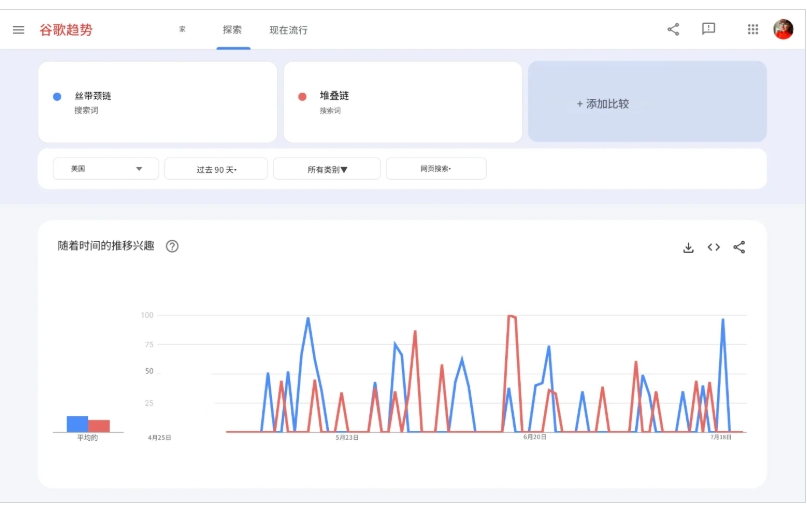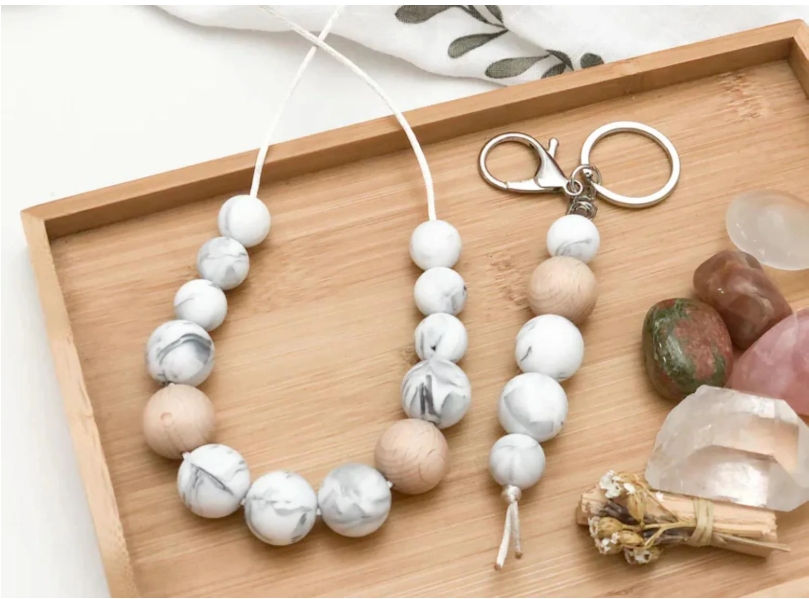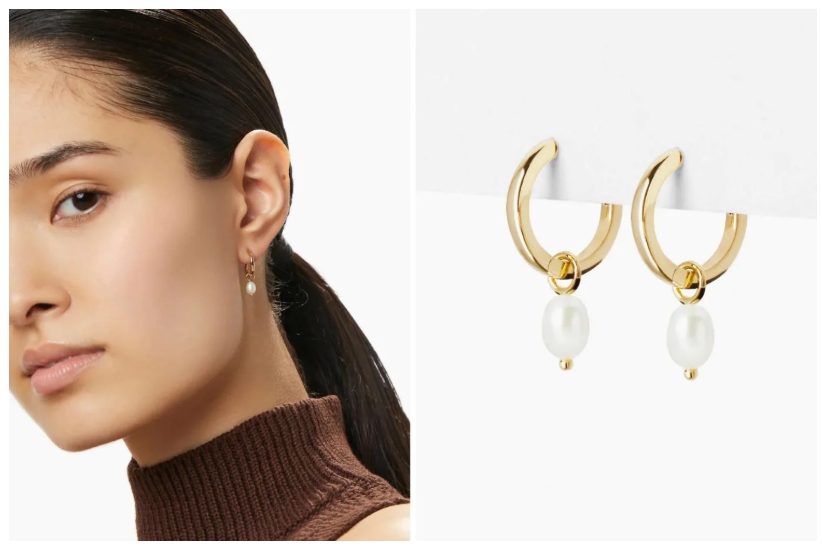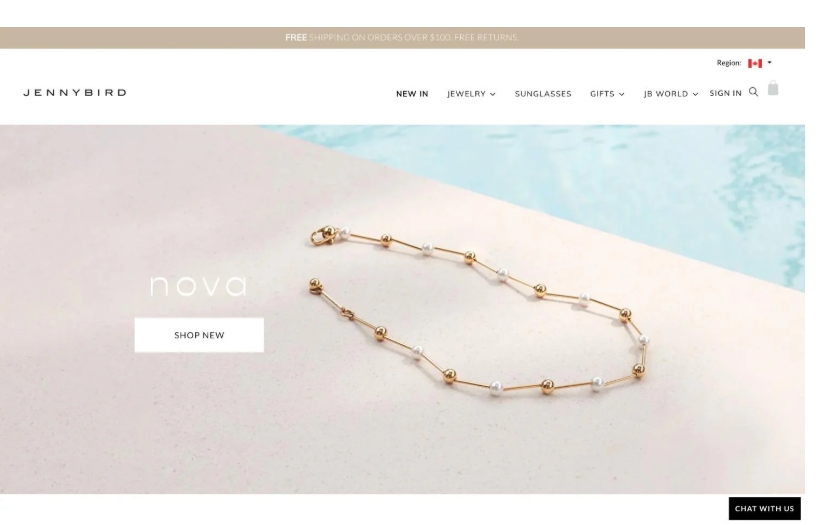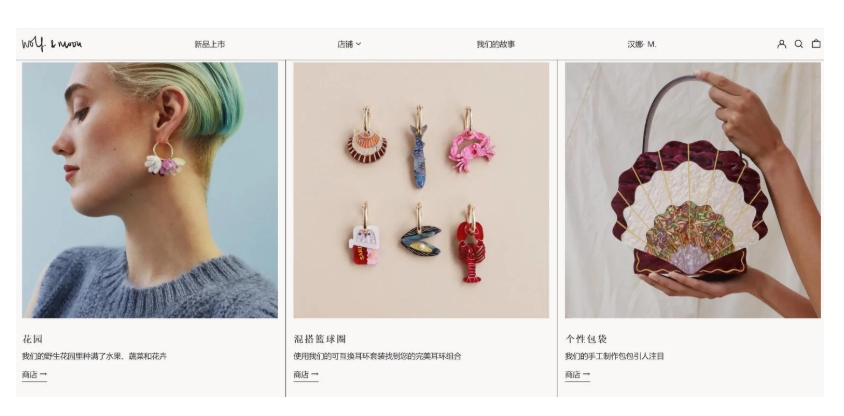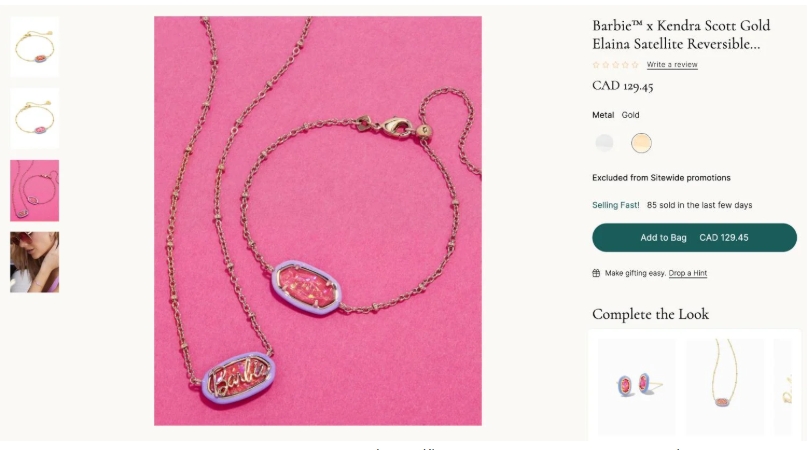How to Start a Jewelry Business: A 9-Step Guide
Many creative people enjoy creating jewelry as a relaxing hobby after a busy day. However, when your creations start attracting attention from friends and strangers, you might ask yourself, “Can I turn this hobby into a business?”
To start a jewelry business, you first need to understand the jewelry industry. It’s a growing industry—the global jewelry market is projected to grow by $88 billion (approximately 616 billion RMB) between 2024 and 2029. This means there’s still plenty of room for growth, and it’s worth exploring niche markets or bringing a fresh perspective to the craft.
If you’re looking for creative ways to make money, this article explores how to build a jewelry brand from scratch, based on the experiences of jewelry designers, and offers expert advice on growing a jewelry business. How to Start a Jewelry Business: A 9-Step Guide
Find Your Niche in the Jewelry Industry
Research Market Trends
Define Your Brand
Manufacture or Sourcing Jewelry
Start a Studio
Product Photography
Open a Global Online Store
Market Your Brand Online
Scaling Your Business
1. Find Your Niche in the Jewelry Industry
A woman wearing Wolf & Moon earrings
Wolf & Moon
The jewelry industry has many niches, ranging from inexpensive plastic beads to exquisite precious metals and gemstones. The first question you need to ask yourself is: What type of jewelry do I want to sell?
It could be fine jewelry, costume jewelry, or something in between. Each category has its own unique materials, craftsmanship, price point, and target audience.
Next, let’s look at the characteristics of the main types of jewelry.
Fine jewelry
Fine jewelry is the high-end of the industry and has the following characteristics:
Made of precious metals or gemstones
Higher price point
Masterpieces
Generally not mass-produced
Customized for luxury, weddings, or special occasions
Fashion or costume jewelry
This type of jewelry is often found in chain clothing stores and online stores. It has the following characteristics:
Designed to follow current fashion trends
Made of beads, wire, electroplated metals, plastics, or synthetic gemstones
Lower price point
Mass-produced
For the average consumer
Artist-designed jewelry
This category covers everything in between the first two. It requires professional skills and moderately priced materials and is generally handmade. Designer jewelry has the following characteristics:
Various materials (textiles, metals, semi-precious stones, wood, 3D printing, etc.), both cheap and expensive
Unique designs (collectible, custom, one-of-a-kind)
Skilled craftsmanship
Pricing is related to the popularity of the designer, generally mid-range
Good for collection and gifting, or as a standout piece
A close-up of a woman’s hand, wearing a Camille Enrico bracelet
Camille Enrico jewelry combines metal and textile materials to create a unique charm that is both recognizable and consistent in design style.
Once you have locked in the direction of your business, you can further identify market segments for your products.
First, define your ideal customer profile (their budget, values, preferences, region, shopping habits, etc.), then you need to decide whether your product is for specific occasions, such as weddings and parties, or for everyday wear. This will determine how you market to your target audience.
A man and a woman holding a dog wearing Enso’s ring
Enso has found its target customer – people who like non-metallic rings, such as some lively personalities, or customers who are allergic to metals.
Jewelry products and categories
After determining your target market, consider whether to sell multiple categories of products or focus on one. For example, focus on engagement rings or sell a variety of mixed and matched fashion jewelry products.
You can consider the following product categories:
Rings (fixed size or adjustable size)
Necklaces (clavicle, pendant)
Bracelets (bracelets, cuffs)
Earrings (drops, clips, studs)
Engagement rings or wedding rings (men’s engagement rings)
Watches
Body jewelry such as toe rings and body chains
Piercing jewelry (nose, belly button)
Also, consider complementary products and complementary categories. Jewelry brand Wolf & Moon sells hair accessories and bag accessories that are unique to the brand.
A woman in a red and white plaid skirt lies on the floor holding a red heart-shaped handbag
Wolf & Moon
2. Research market trends
As a new entrepreneur, the most important thing you need to know before launching your business is how to reach your target audience. In other words, you need to find the right market for your product.
Keep up with jewelry trends
Research popular trends to verify the direction you choose. Read fashion and jewelry articles and follow fashion influencers, including TikTok influencers, to keep up with trends. Seek inspiration from other jewelry designers.
In addition, be active in data research. Use Google Trends to see global search volume for specific terms.
Google Trends Chart
You can also study consumer trends for other similar products, such as the market demand for custom engraved products. Or, use more socially responsible materials to cater to the European and American markets’ concerns about environmental protection, ethical issues, and the growing trend of sustainable consumption.
However, companies do not have to follow trends. You can also use the jewelry business to convey your own values. Biko founder and designer Corrine Anestopoulos launched an exclusive jewelry collection based on personal style.
Close-up of a woman’s arm and hand, wearing Biko jewelry
Biko jewelry products are between accessories and boutiques, and are high-end designs suitable for daily wear.
“Somehow I think my success was just a fluke, I just stumbled upon a new market, but it’s just my aesthetic,” said Corrine. When she first started, she launched a brass finish. “No one else was designing like that at the time, because bright silver was the popular color at the time,” she said.
Although Biko’s product line changes every year to follow the trend, the highly recognizable design remains unchanged, which is the brand’s positioning and also allows the brand to have more repeat customers.
A Guide to Using Google Trends: A Decision-Making Guide for Cross-Border E-Commerce
E-Commerce Keyword Research: A Beginner’s Guide
3. Find Jewelry Design Inspiration from Everywhere
For newcomers to any form of success in the fashion industry, a strong aesthetic, unique design, and consistent branding are essential. Before hiring a designer to develop your brand or create individual pieces, you’ll need to practice and determine your desired overall design effect and style.
You can create a Pinterest board to create your mood, use jewelry design software, or even gather inspiration from bulletin boards and sketch your ideas in a sketchbook.
Jen Pace Duran’s Pinterest Page
Jen Pace Duran, a designer, uses mood boards on Pinterest to gather inspiration. Pace Creative
Adobe Express Page
Use tools like Canva or Adobe Express to organize your inspiration into mood boards. Adobe Express
Collect images, colors, and textures from nature, architecture, fashion, or travel experiences before deciding on a theme. “Never stop looking for inspiration,” says Corinne. “No matter where I am, I’m constantly trying to draw inspiration and collect inspirational images.”
I’m always drawing inspiration and collecting inspirational images, no matter where I go.
Corinne Anrestopoulos, founder of Biko
3. Define Your Brand
Successful jewelry businesses all have one thing in common: a rock-solid brand foundation.
Remember, branding isn’t about branding. Branding is about conveying attitude, mission, vision, and story. It tells your potential customers how to perceive your product. Fashion consumption is often emotional, and emerging brands can win over new customers on a personal level, even with just a simple name.
Tell Your Brand Story and Define Your Brand’s Voice
Develop a “brand guide” to guide all future branding efforts. This is a crucial document that defines the brand’s voice, attitude, mission, and values. Even as you scale, the “brand guide” helps your team maintain consistency in their communications.
Best Practices for Jewelry Branding:
Understand your audience. How do they speak? What tone or slang resonates with them? Decide on your brand’s voice and style.
Tell your brand story on your “About” page.
Share your design process and inspiration, and leverage social media to showcase your authentic self.
Anice Jewellery’s “About” page tells the story of owner Britt.
Packaging, Logo, and Brand Identity
Branding encompasses the visual elements of your brand strategy: logo, packaging, business cards, and website.
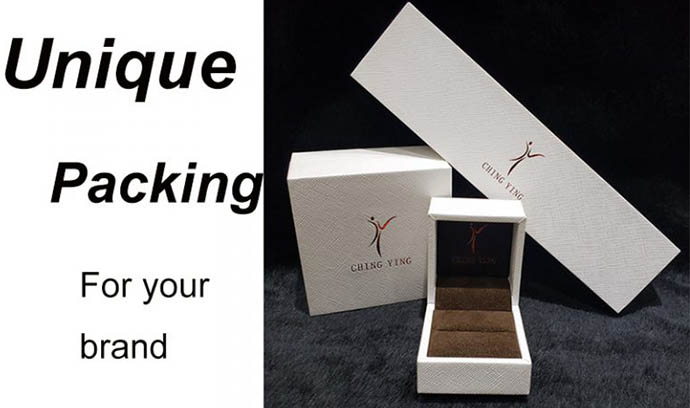
Determine your product aesthetic, choose a resonant business name, identify your target customer group, and finally, define your brand’s overall look and feel. Even small businesses need to take this step-by-step, so don’t rush.
As a jewelry entrepreneur, brand design tasks include:
Decide on your fonts, colors, and photography aesthetic.
You can use a free online logo maker or hire a professional to create your logo.
Create a library of brand assets, including multiple versions of your logo and other design elements that will appear on packaging, social media, and your website.
Choose a memorable domain name so customers can easily identify your website. Design product packaging, use creative shipping materials, and organize everything around your brand image.
An open box displays Frank Darling jewelry.
Frank Darling’s Instagram page.
From packaging to social media content, Frank Darling’s brand image remains consistent across every touchpoint.
Writing a Jewelry Business Plan
If you’re not planning to raise investment, you probably don’t need a formal business plan. However, reviewing a business plan template is a good exercise to help you analyze your target audience, goals, business model, costs, and growth plan. This will also be helpful for future jewelry business development.
A business plan outlines your brand’s mission and values, which can help you find investors and business partners who align with your business.
Fashion Branding Guide: 12 Ways to Build a Fashion Brand (2025)
What is brand positioning? Definition, examples and importance
Branding: Importance and methods
4. Producing or sourcing jewelry products
How is the product made? Is it handmade? Factory-made? Home-made? Or outsourced development? It depends on the complexity of the design, price point, materials and skill level. This section will introduce five production and sourcing methods and discuss how to start a jewelry business:
Handmade jewelry making: exquisite and unique
Handmade jewelry making: fashion accessories
Jewelry production: factory outsourcing
Jewelry production: print on demand
Jewelry planning: dropshipping or resale
Handmade jewelry making: exquisite and unique
A hand resting on the armrest of a wooden chair to show Rachel Boston’s ring
Rachel Boston
Handmade unique jewelry products can be said to be the most complex and variable production method.
Depending on the material and design, some custom jewelry requires professional training/certification and expensive equipment. Craftsmen need to learn several methods, including:
Welding
Silver/Gold Making
Casting
3D Printing
Laser Cutting
Leather Stamping
Weaving
Gem Setting
Consider learning the basics of jewelry making by watching free online tutorials. Then, upgrade to paid courses or find an artisan to learn from and expand your skills.
Handmade Jewelry Making: Fashion Accessories
One Chew Three jewelry displayed on a wooden tray
One Chew Three designs silicone fashion jewelry for mothers of infants and young children.
Handmade costume jewelry is usually assembled from common elements such as chains, wires, beads, cast pendants, etc., and no special training or equipment is required other than basic hand tools.
This type of business is easier to scale, so you can buy raw materials in bulk or make templates and hire people to assemble them according to your designs.
If you enjoy the design and production process more than the business part of the jewelry business, you can outsource or hire employees to help bring your ideas to life.
Biko founder Corrine went to a local university, which was running a well-known fashion media program at the time, to look for interns. “I never look for people who are interested in design, I look for people who can help me free up time so that I can focus more on design,” she said.
Jewelry Production: Factory Outsourcing
Instead of making jewelry yourself, it is better to outsource your design to someone else for manufacturing. This approach is not suitable for high-end jewelry, custom jewelry, or exclusive jewelry products, but it is very suitable for mass-produced costume jewelry and is more cost-effective.
The benefit of local manufacturing is the appeal of “local” and creates opportunities for building relationships and factory supervision. The disadvantages are higher costs, limited selection, and limited production.
Overseas manufacturing is a good solution if you want to reduce costs (for companies that produce in large quantities) and there are many factory options. Possible challenges include communication barriers, less supervision, and fulfillment issues caused by supply chain delays.
If you are outsourcing production to a manufacturer, you must be prepared with accurate design drawings or 3D renderings, as well as relevant technical specifications.
Jewelry Production: Print on Demand
The easiest way to make it is to upload the design to print on demand software. Print your designs in stainless steel, wood, plastic, gold or silver and ship directly to your customers.
There are many overseas on-demand printing companies in the Shopify App Store that can print your designs on mugs, T-shirts or jewelry.
Jewelry Planning: Dropshipping or Resale
If you are short of creative ideas but still have a special liking for jewelry, then you can consider running a resale business and buy jewelry pieces from other designers and sell them on your online store. You can manage inventory and logistics yourself, or choose the jewelry dropshipping model.
If you choose the dropshipping model, you don’t have to worry about inventory issues and can start the business with very little capital. Just sell products through your online store, and your orders will be shipped directly to your customers by the supplier.
11 Best Dropshipping Software to Easily Start Selling Across Borders
Automated Dropshipping: Everything You Need to Know
Etsy Dropshipping: The Ultimate Guide
5. Setting Up a Studio
Handmade Small Accessories
If you choose to make jewelry in-house, you’ll need a large enough workspace for you and your team. When setting up this space, consider the following:
Workability. Consider the flow of the space, especially if it involves multi-step assembly—do you need to move from one station to the next sequentially?
Safety. Jewelry making may involve chemicals, requiring proper ventilation and safety precautions. Check local laws governing substances and processes.
Storage. Keep small parts organized and use multi-compartment storage boxes. Gillian Johnson, founder of the Canadian jewelry brand Hawkly, says, “A workbench, mandrels, and safety measures are paramount for any jeweler. Mandrels are wonderful, versatile tools that can be used for drilling, finishing, and polishing.” She also recommends wearing a mask and goggles, and those with long hair should pull it back to avoid entrapment.
If you have a large team or require more complex craftsmanship, such as a metalworking workshop, you might consider renting commercial space. If that’s beyond your budget, consider sharing a studio and sharing the space and equipment costs with other entrepreneurs. Gillian keeps her studio separate from her other two businesses.
Sharing space can help alleviate the loneliness of entrepreneurs, as Corian has experienced. “After working full-time at Biko for a while, I started working at a clothing retail store once a week to combat the isolation of the studio.”
A green box opens to reveal Aurate jewelry.
Aurate
Jewelry Equipment and Tools
There are many online courses for jewelry making, including how to wholesale jewelry equipment, tools, and supplies, and how to source precious gemstones and metals.
When it comes to wholesalers, Jillian relies heavily on word-of-mouth. “Ask other designers where they find their suppliers,” she says.
She also regularly attends trade shows and industry events to expand her network and discover new materials.
“My favorite place to go is the Tucson Gem and Jewelry Show to source new gemstones and silver jewelry, as there are thousands of suppliers from all over the world.”
6. Product Photography
A female model wearing a necklace faces the camera.
Hawkly
A common mistake for new entrepreneurs is underestimating the importance of product presentation and marketing. Professional jewelry photography can make or break your online store. This is true for many industries, but it’s particularly crucial for fashion and jewelry brands.
Most of the time, you can create stunning DIY product photos with a smartphone simply by setting up the lighting. However, jewelry is very detailed, and some reflective surfaces may show through the lens.
Don’t skimp on your photography.
Corian Anestopoulos
Even if you have a limited budget, don’t skimp on photography. Professional photographers are skilled at capturing the beauty of models and can create more complex lighting scenarios. In addition to the photographer, a photography team also includes stylists, makeup artists, and assistants.
Hiring models doesn’t have to be expensive. “There are always people looking to acquire new clients or showcase themselves through product,” says Kerrien. “It’s not about taking advantage of others, because everyone is new. If you bring a group of people like that together, you can create magic together.”
When shooting, remember to show your product from different angles and perspectives. Here are two types of photography:
Product photography. These use a clean background to showcase the product, minimizing distractions and highlighting details and angles. This creates a cohesive visual effect on collection pages.
Lifestyle photography. These supporting images often feature models posing the product to highlight proportions, style, and styling ideas. They’re great for upselling—inducing customers to purchase multiple items and combine them. These images can be featured on product pages or in lookbooks, and are also great for social media.
Hawkly’s Model Lookbook
Hawkly captures lifestyle photography for each season’s lookbook. Ana Luisa jewelry on a model.
Having the product on a model emphasizes its size and shape, while the product photos showcase the details. Ana Luisa
How can you cut costs? Partner with complementary clothing brands to reduce photography costs, or lend your jewelry pieces to fashion editors for shoots. You’ll receive free photos and increase your brand’s exposure.
What are the tips for shooting jewelry? Discover the secrets of jewelry photography with the experts
How to take product photos with natural light
Reflective surface photography: how to shoot shiny products
7. Open a global online store
Jenny Bird Jewelry
Jenny Bird
After you have positioned your products, created your brand, and taken great photos, it’s time to find a place to sell them. For most people, that’s online.
You don’t have to spend a lot of money to build a complex website. You can use a free template to create a Shopify store and set up brand assets, fonts, and colors.
Choose a website template that is suitable for displaying jewelry and focuses on photography. You can click to view these Shopify themes suitable for jewelry business.
Important information pages and content
Wolf & Moon page shows its jewelry and information
Wolf & Moon
Must-have website pages and information for jewelry stores:
Homepage: Showcase large lifestyle photos to immediately attract visitors’ attention. Keep the page clean and focus on new products, popular products and collections, and have a clear call to action (CTA).
Collection pages: Divide products into different collections by type, price, material or wear occasion.
Product Pages: Product pages include information such as size, material, and care instructions. Multiple photos can be shown to cover all angles of the product.
Contact Information and About Pages: Every e-commerce website needs to provide this information. The focus is on the customer service provided and the brand’s story.
Finally, the copywriting on all pages should use a consistent brand language style, touch the visitor (what do you want customers to feel?) and provide practical and specific information. Product descriptions should be integrated into the brand story and include specifications and parameters.
8. Online Brand Marketing
Fashion and jewelry are saturated industries. How can customers discover your products in the noise? A good marketing strategy is based on the product, audience, and budget, and may require some trial and error. How to acquire customers will be a constant concern for brands. Here are some ways to get started.
Social Media Marketing
Marketing jewelry is not about pushing messages to your fans like crazy. You can show your products in less direct ways, such as artistic videos, spiritual photos, or interesting posts. You need to slowly cultivate fans and see whether interactive participation and sales increase accordingly.
Kerrien recommends filling the gaps between posts showing off your products with other interesting content. “After a while, you’ll find that you’re inspired by the same things, and that tells a good story in itself.”
Follow each social network and test content to see what attracts users. Each platform has its own characteristics – TikTok is known for short videos that are authentic and novel, while Instagram is more suitable for posting exquisite photos and videos.
Organic content can also gain a certain amount of attention. Consider investing in social media marketing to gain insights into your audience and expand your brand’s reach.
Self-media marketing and cooperation
Kerrien also cooperates with influencers on Instagram, using her own products in exchange for special posts by influencers. She recommends that before contacting influencers, always make sure that your hashtags and product curation on Instagram are attractive enough, and the positioning is clear, so that they know that your brand style is consistent with their content.
“Creating a lifestyle around your work is the most important thing,” she said.
Influencer marketing provides a degree of social proof that cannot be achieved through direct advertising. Young consumers are increasingly trusting the products recommended by social media creators. Shopify Collabs is a great platform to help you connect with self-media creators.
Another organic marketing method is to collaborate with other brands. Joint promotions, co-hosting events, giving away giveaways to users, and even working with complementary brands to develop new products are all viable options.
Barbie Jewelry Collection
Kendra Scott teamed up with Mattel to launch a jewelry collection in honor of Barbie before the release of the Barbie movie. With the release of the movie, the brand also benefited greatly from the surge in user searches and related marketing activities.
Cross-border e-commerce must read! 30+ overseas self-media marketing data
11 Best Influencer Marketing Platforms (2025)
How to Market Your Business on Social Media: 15 Easy Ways to Get Started
How to Sell Products on Social Media
Jewelry Brand PR
Jewelry marketing faces unique challenges. In 2011, Kerrien noticed that competition in the industry was increasing, so he invested in rebranding and hired a PR company to promote it. “Working with a PR firm was expensive but incredibly valuable and led to some of the most compelling press coverage we’ve ever had for our brand,” she says. “After one of our bracelets was featured, it generated $5,000 in sales.”
Try a variety of marketing strategies, from website SEO to email marketing, and analyze the results to find out what works best for your brand.
Pop-up stores, wholesale, and artist markets
Corian’s career began at a local clothing show. She was invited to showcase her products in a booth. At the time, she was just making jewelry as a hobby. As a result, her products sold out on the first day of the show, which validated her idea and inspired her to turn her passion into a business.
Markets provide opportunities, so you have to get out there and meet customers face to face and listen to feedback.
Corian Anrestopoulos
Bringing your products to craft markets is not only a great way for new brands to reach a built-in audience and validate their ideas, but it’s also important for established e-commerce brands. “Markets provide opportunities, so get out there and meet with customers face to face and get feedback,” says Kerrien.
Start selling in person with Shopify POS
Shopify POS is the easiest way to sell in person. Take your brand on the road, accept payments from customers anywhere, manage inventory and expenses, and discover opportunities at farmers markets, pop-up stores, parties, craft fairs, and more.
Explore Shopify POS
Of course, you can also host events in your studio.
“Selling samples allows you to clear out some old inventory, and it’s a great way to get customers into your studio and see how things work,” says Kerrien.
If your workspace isn’t open to tours, you can also host pop-up events at other retailers.
Kerrien also initially built her business through consignment and wholesale agreements. She negotiated these opportunities herself with local retailers. She says that the risk of being rejected when you walk in is high, but all you need is a “yes” to get started.
While the jewelry market is competitive, it shouldn’t be seen as a hindrance. Competition means it’s a healthy market with high demand. The key is to enter smartly: Offering a unique product and experience will differentiate you. Avoid imitating the cookie-cutter products in the market.
9. Scaling up your business
Biko earrings displayed on green plants
Biko
Startups can start small, selling their designs to local boutiques. As the business scales up, you can look for larger partners. Wholesale is still the bulk of Biko’s business, and Kerrin has partnered with Nordstrom, Simmons and Hudson’s Bay, among others.
Online platforms and sales channels
You can sell jewelry through an online store or offline retail stores. Depending on your brand strategy, you may also choose to sell your products exclusively in your own store.
But stores can do more than just display and sell products. Today’s online stores are all-encompassing and can connect to many sales channels, each with its own audience.
Large online sales platforms are the obvious way forward for many brands. Amazon offers access to millions of shoppers, while Etsy is where people looking for handcrafted goods flock.
Shopify store owners can easily list their products on these sales platforms through the Marketplace Connect app and manage everything directly from the store backend.
Social media accounts are also a very lucrative sales channel for jewelry. With TikTok stores or Instagram, you can serve customers directly in the app. This reduces friction, like pushing the checkout counter to customers who are attracted by the content.
Internationalize your business
If you are already successful locally, expanding international markets is a way to enter new markets and increase sales. E-commerce platforms such as Shopify can help you reach a global audience, accept checkouts in multiple currencies, and manage international logistics.
Sell jewelry online now
Facing a nearly saturated jewelry market, newcomers may feel daunting. But remember, jewelry business can be built step by step. Many successful jewelry designers started their first product as a side hustle or started a business at their dining table.
The jewelry industry allows for small-scale production, so you can start by trying to design at home. You just need to identify a niche, a brand, and a basic business plan. The design possibilities are endless, and there is still room for emerging designers to show their talents.
As Gillian said, “The best way to stand out is to be true to yourself, trust your design instincts, and listen to your customers.”
Cover illustration: Pete Ryan
How to start a jewelry business – FAQ
How to start a jewelry business online?
Follow these steps:
Identify a niche
Research market trends
Write a business plan
Define your brand
Manufacture or source jewelry products
Take professional photos of your products
Open an online store to sell jewelry
Market your brand online
Scale up your business
Do you need a business license to sell jewelry online?
Yes, cross-border transactions also require a domestic business license. No matter where you plan to produce and sell jewelry, you should understand the local business regulations to avoid adverse effects on your business due to incomplete procedures.
What basic tools do you need to make jewelry?
It depends on the type of jewelry you are making. If you use the print-on-demand method, almost no upfront equipment is required; most fashion and costume jewelry accessories are ready-made, but they also require some simple tools, such as pliers; if you plan to make high-end jewelry products, you may need to purchase some very expensive and special equipment.
How much does it cost to start a jewelry business?
This is closely related to the complexity of the production model. For simple jewelry production, you can start a business with only a few hundred yuan. If you want to make high-end jewelry, you may need to invest tens of thousands of yuan to purchase equipment and raw materials and make them in a professional studio. To achieve business success, you must first understand the cost of starting a business and understand cash flow management.
